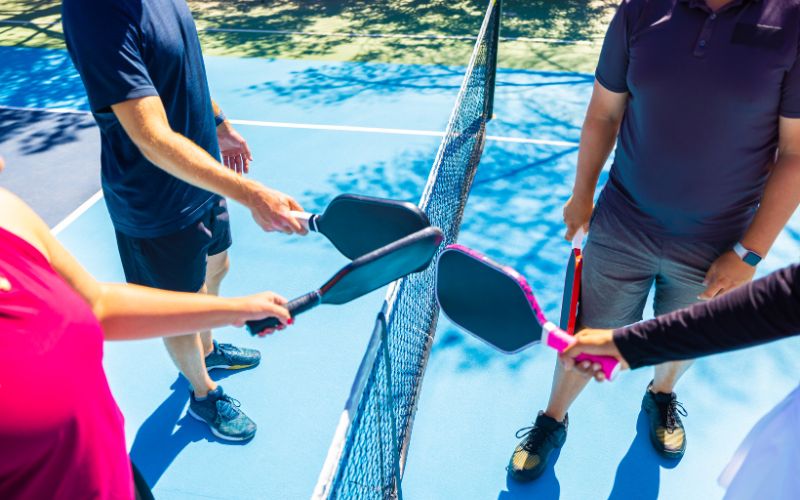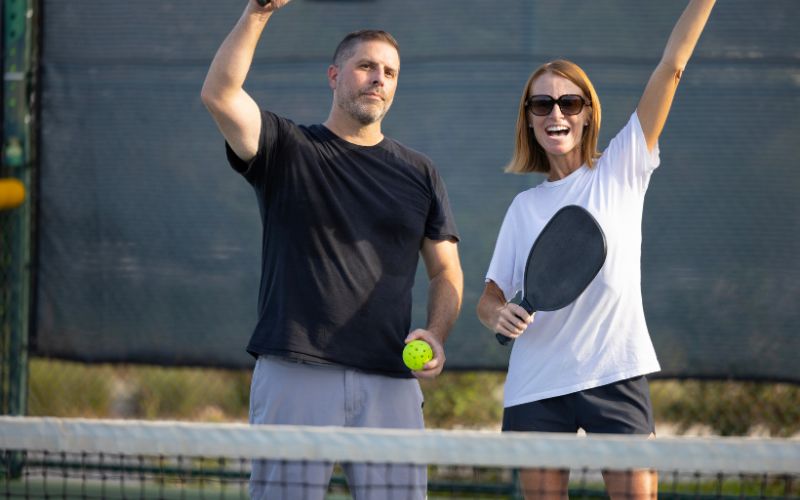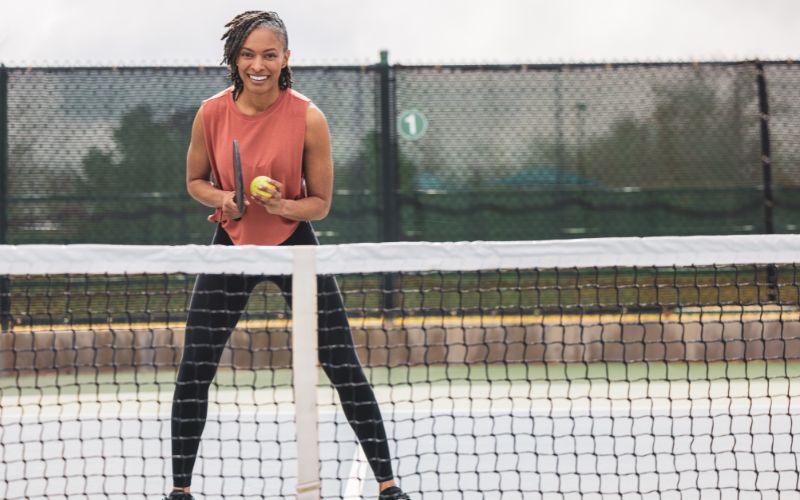Pickleball has rapidly gained popularity over the years, becoming a beloved pastime for people of all ages. Whether you’re a seasoned player or just starting out, maintaining your pickleball equipment is crucial for optimal performance and longevity. Among the essential equipment is your pickleball paddle, which requires regular cleaning to ensure it stays in top condition. In this guide, we’ll explore effective methods and tips for cleaning your pickleball paddle to keep it looking and performing like new.
Importance of Cleaning Your Pickleball Paddle
Preserving Performance and Durability
Regular cleaning of your pickleball paddle is essential for maintaining its performance and durability. Over time, dirt, sweat, and grime can accumulate on the paddle surface, affecting its grip and responsiveness. By cleaning your paddle regularly, you can preserve its texture and ensure consistent playability on the court.
Preventing Damage
Neglecting to clean your pickleball paddle can lead to long-term damage. Dirt and debris trapped on the surface may cause scratches or abrasions, compromising the integrity of the paddle. Additionally, moisture buildup can promote the growth of mold and mildew, further deteriorating the paddle. Proper cleaning techniques can help prevent damage and extend the lifespan of your equipment.
Materials Needed for Cleaning
Before you begin cleaning your pickleball paddle, gather the necessary materials:
- Mild soap or paddle cleaner
- Soft sponge or cloth
- Water
- Towel
- Paddle sealant (optional)
Step-by-Step Cleaning Process
1. Remove Excess Dirt and Debris
Start by wiping down your pickleball paddle with a dry cloth or towel to remove any loose dirt or debris. Pay attention to the edges and corners where grime tends to accumulate.
2. Prepare Cleaning Solution
Mix a small amount of mild soap or paddle cleaner with water in a bowl or container. Avoid using harsh chemicals or abrasive cleaners, as they may damage the paddle surface.
3. Clean the Paddle Surface
To maintain your paddle’s cleanliness, begin by wiping it down with a dry microfiber cloth to eliminate any loose dirt or debris. Next, lightly mist a small quantity of glass cleaner onto the cloth and delicately wipe the surface of the paddle. It’s important to employ a gentle touch and refrain from vigorous scrubbing, as excessive pressure may cause the cleaner to penetrate too deeply, potentially harming the paddle.
After completing the cleaning process, utilize the microfiber cloth once more to eliminate any residual cleaner and ensure the paddle dries thoroughly before its next use.
While using a glass cleaner and microfiber cloth to clean pickleball paddles is generally considered safe, it’s essential to exercise caution by avoiding excessive use of cleaner or vigorous scrubbing. This precaution is particularly crucial for paddles with textured surfaces, as they may be more susceptible to damage.
Utilizing Different Household Cleaning Solutions
There are various household cleaning agents suitable for safely cleaning pickleball paddles, such as:
- Mild dish soap and water: Combine a small quantity of mild dish soap with warm water and delicately cleanse the paddle using a soft cloth or sponge. Rinse thoroughly with clean water and ensure complete drying.
- White vinegar and water: Mix equal proportions of white vinegar and water, then apply the solution onto a soft cloth or sponge to gently scrub the paddle. Rinse off the residue and dry the paddle.
- Baking soda and water: Create a paste by blending a small amount of baking soda with water, then apply it to the paddle’s surface using a soft cloth or sponge. After gently scrubbing, rinse the paddle with water and ensure thorough drying.
- Rubbing alcohol: Dilute a small amount of rubbing alcohol with water and use a soft, damp cloth or sponge to gently cleanse the paddle. Rinse the paddle with water and dry it thoroughly afterward.
4. Rinse Thoroughly
After cleaning the paddle surface, rinse it thoroughly with clean water to remove any soap residue. Ensure that all cleaning solution is washed away to prevent residue buildup.
5. Dry the Paddle
Use a dry towel to pat the paddle dry and remove excess moisture. Avoid air-drying in direct sunlight, as prolonged exposure to sunlight may cause damage to the paddle material.
6. Optional: Apply Paddle Sealant
For added protection, you can apply a paddle sealant after cleaning and drying your pickleball paddle. This sealant helps protect the surface from dirt, moisture, and UV damage, prolonging the lifespan of the paddle.
Additional Tips for Paddle Maintenance
Store Properly
When not in use, store your pickleball paddle in a cool, dry place away from direct sunlight and moisture. Consider using a paddle cover to protect it from dust and scratches during storage.
Avoid Harsh Conditions
Avoid exposing your paddle to extreme temperatures or harsh conditions, as they can damage the paddle material. Keep it away from sources of heat or cold, such as radiators or air conditioning vents.
Inspect Regularly
Periodically inspect your pickleball paddle for any signs of damage or wear. Check for cracks, dents, or peeling on the surface, as these issues may affect performance and safety during play.
Clean Grips and Handles
In addition to cleaning the paddle surface, remember to clean the grips and handles regularly. Use a mild soap or grip cleaner to remove dirt and sweat buildup, ensuring a secure grip during gameplay.
Conclusion
Proper maintenance of your pickleball paddle is essential for ensuring optimal performance and extending its lifespan. By following the steps outlined in this guide and incorporating regular cleaning into your routine, you can preserve the quality of your paddle and enjoy consistent play on the court. Remember to use gentle cleaning methods and avoid harsh chemicals to protect the integrity of the paddle material. With proper care and attention, your pickleball paddle will continue to serve you well for many games to come.
FAQs (Frequently Asked Questions) about Cleaning Your Pickleball Paddle:
1. Why is it important to clean my pickleball paddle regularly?
Regular cleaning of your pickleball paddle is essential to maintain its performance and durability. Dirt, sweat, and grime can accumulate on the surface over time, affecting grip and responsiveness. Cleaning your paddle regularly helps preserve its texture and ensures consistent playability on the court.
2. Can neglecting to clean my pickleball paddle cause damage?
Yes, neglecting to clean your pickleball paddle can lead to long-term damage. Dirt and debris trapped on the surface may cause scratches or abrasions, compromising the integrity of the paddle. Additionally, moisture buildup can promote the growth of mold and mildew, further deteriorating the paddle. Proper cleaning techniques can help prevent damage and extend the lifespan of your equipment.
3. What materials do I need to clean my pickleball paddle?
To clean your pickleball paddle, you will need mild soap or paddle cleaner, a soft sponge or cloth, water, a towel, and optionally, paddle sealant for added protection.
4. How should I store my pickleball paddle when not in use?
It’s important to store your pickleball paddle in a cool, dry place away from direct sunlight and moisture. Consider using a paddle cover to protect it from dust and scratches during storage. Avoid exposing your paddle to extreme temperatures or harsh conditions, as they can damage the material.
5. How often should I clean my pickleball paddle?
It’s recommended to clean your pickleball paddle after each use or at least once a week if you play frequently. Regular cleaning helps prevent dirt and grime buildup, ensuring optimal performance and extending the lifespan of your paddle. Additionally, inspecting your paddle regularly for signs of damage or wear is also advisable.






